Firstly I should state there is no such thing as a permaculture pig, but rather pigs woven in to a permaculture design. Firstly we have to look carefully at every element we are planning on putting in to our design.
Then comes the usual question; what is an element? Each thing, be it animate or inanimate, we intend to add to our overall system is an element; these could be a tree, an animal or a shed. Each element has it’s needs (inputs), it’s benefits (outputs) and it’s intrinsic behaviours. If we look carefully at each element, including some serious research, we will gain some idea of how to integrate the element for best effect: for productivity and reduced waste.
So lets look at what the inputs, outputs and intrinsic behaviours of a pig are:
Pig Analysis
|
||
| Inputs | Intrinsic Behaviour | Outputs |
|
Food Water/Drinking Shelter Bedding Shade Water/Wallow Other pigs Space Access to soil |
Rooting Wallowing Wandering/escaping Breeding Playing |
Meat Manure Ploughing? Other Pigs? Heat Methane |
When I first kept pigs, now 15 years ago, I fed them on granules purchased from a farm store and waste from the house, plus what they could glean from the land they had access to. The pork was a delight.
However, the granules where a mixture of grains including soy and molasses; this is not the natural diet of pigs. It’s a very energy intensive way to feed pigs, which is very bad for our global ecosystem, because of the fossil fuel consumption and the resulting soil degradation and loss from plough agriculture.
Now we fulfil our pigs food needs with both a designed land-based system and from wastes in and around our system. So what do pigs or wild pigs eat? A study of wild boar in the French Alps found they ate:
- Roots 39%
- Fleshy fruits 21%
- Green parts of plants 17%
- Forest fruits (mostly nuts) 7%
- Maize (stolen from fields) 7%
- Humus (soil) 6%
- Animal matter (earthworms) 1%
- Mushrooms 1%

Excess skimmed milk and whey from the dairy cows at Eden is fed to the pigs
This is completely different from industrially raised pigs, and even our previous home raised pigs. We need to take a good long look at how we can provide a diet more like their natural diet, while avoiding waste, or what we sometimes call entropy (loss of energy from our system).
Planting root crops, fruit and nut trees and edible greens could provide 84% of their natural diet. Trees would be a long-term project, taking four to five years to provide a significant amount of their diet, but in the mean time foraging could help fill the gap.
Finding a source of grain that does not cost the earth, financially or ecologically, would help too. Aiming for a closed cycle on our farm is also a consideration, this means we are trying to fill the needs of each element of our system with the outputs or waste from another element.
We have three dairy cows in milk at the moment, giving us large amounts of skimmed milk and whey, depending on what use we put the milk to. While dairy is not natural food for pigs, it’s closer to their nutritional needs than many grains, and certainly closer to their needs than molasses.
So below you can see a graphic representation of the pig’s land-based system; this consists of just over 1000 square meters with the house and small concrete yard in the north corner.

The pigs are given access to one of the wedges at a time, controlled by electric fencing. The whole area is hedged externally and new hedges were planted last year to make the three separate areas. The hedge consists of hawthorn, blackthorn, sea buckthorn and guelder rose, with larger trees of hazel, sweet chestnut, oak, wild apple, wild pear and rowan.
The whole hedge is designed to provide nutrition for the pigs and their caretakers. The hedge also provides shade and shelter. Inside the hedge, in each wedge, we are planting annual crops on rotation to provide further nutrition and interest for the pigs.
The crops will include brassicas, beats, beans, peas, maize and clover, depending on the season and previous crop, other plants will grow from wind-blown seed. Most plants will be directly harvested by the pigs. The rest of the pig’s diet will be taken care of by our milk byproducts and spent grain from a local brewer “La Brasserie Vert” . We enjoy the beer and so can you, and the waste product goes to the pigs: win, win!
We always buy two or more pigs at a time, so the need for companionship is fulfilled. The pig’s body heat helps keep their house warm in colder months. Water is provided for both wallowing and drinking twice each day, in separate locations.

Hedges planted at Permaculture Eden
The pig’s manure is used by the crops which follows their rotation from one cell to the next. The only waste product is the methane and, while this is ecologically detrimental, it is offset by the very low food miles compared to industrial agriculture and its related distribution system.
We don’t breed from our pigs so we buy same-sex pigs to avoid accidental reproduction.
Because we run courses on our site throughout the year, we usually consume two pigs on site. Now we have so much excess output of spent grain and milk byproducts we will be keeping pigs all year round, giving us two extra pigs. One will be shared with the brewers Stewart and Helen: “fare exchange is no robbery”. The other will be made into high quality pork products for sale to the public at the gate.

Sausage making at Permaculture Eden

About the author
Steve Hanson is an educator, wood turner and farmer. Alongside Fiona Hanson he owns and runs Permaculture Eden, a five hectare human scale, integrated, regenerative, farm designed to educate and inspire by example. Under design and development since 2004 Permaculture Eden is now one of the world’s most advanced and productive permaculture sites.

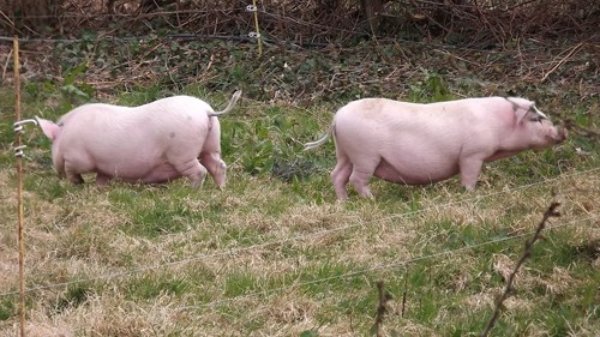
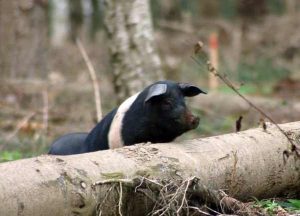
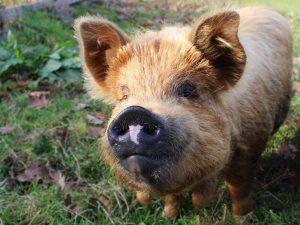
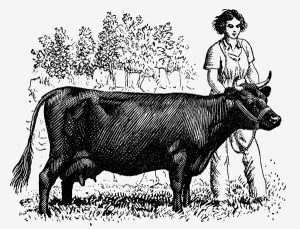

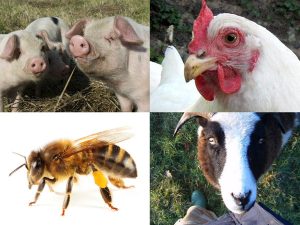
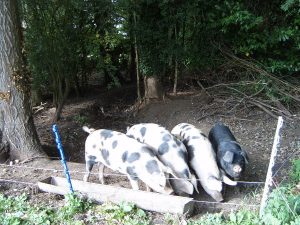
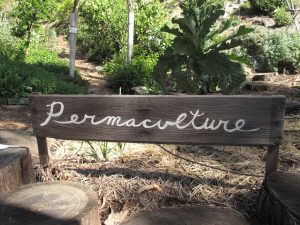
1 Comment
Do you use the pigs manure in the edible garden? Or is it limited to the crops grown for the pigs?